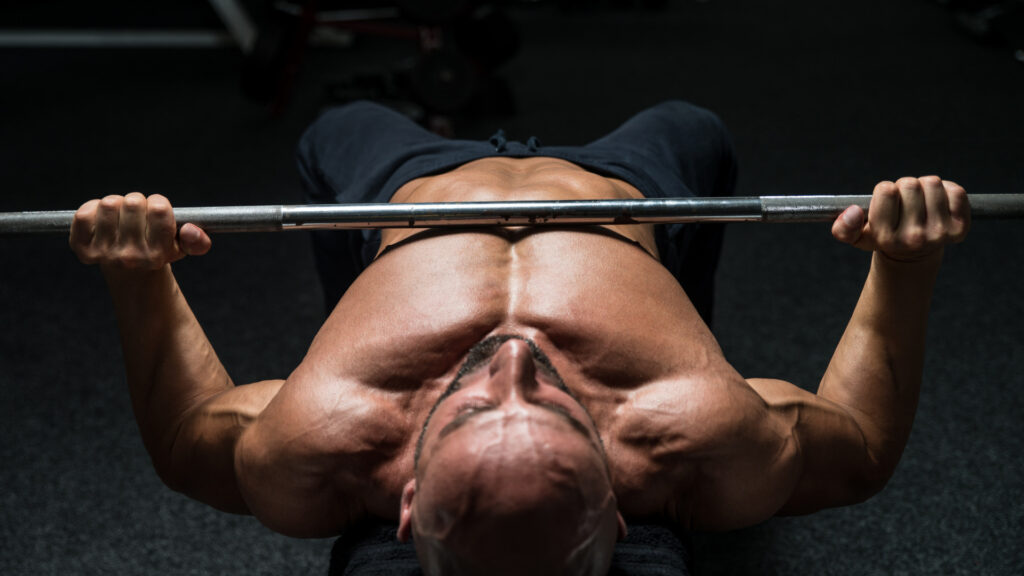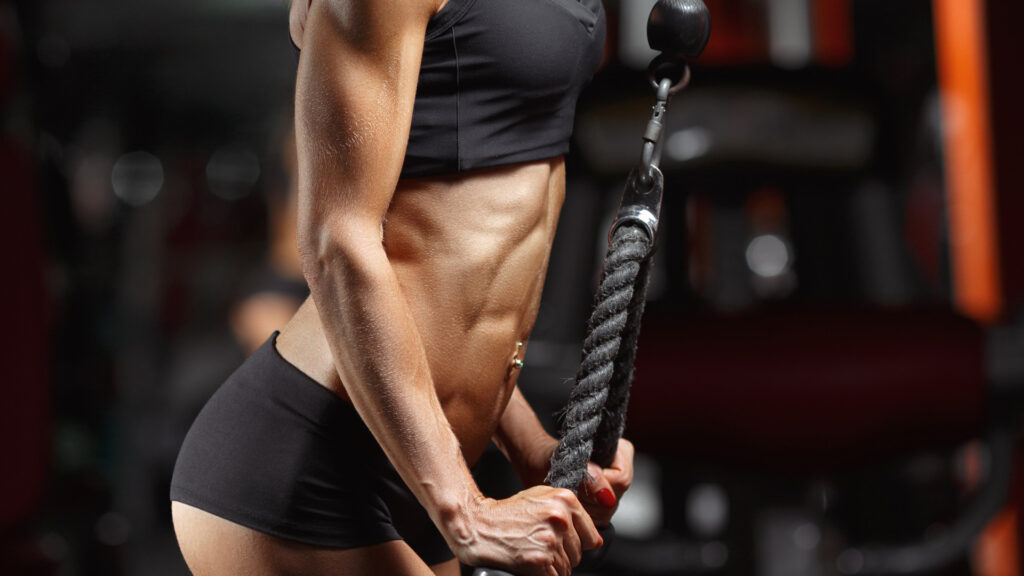What is pre-exhaust training and does it work? Pre-exhaust is a bodybuilding technique for focusing the stress of compound exercises on the targeted body part. It’s become controversial with internet “fitness experts” claiming it’s been debunked. We’ll take on the critics and explain what they’re getting wrong and why pre-exhaust works and works well. This is your ultimate guide to pre-exhaust training.
HOW PRE-EXHAUST WORKS
First, let’s define two terms.
Isolation exercises work only one body part (like pec-deck flyes for chest).
Compound exercises utilize multiple body parts (like bench presses, which stress primarily the chest, but also the anterior deltoids and triceps, as well as other muscles in support).
Here’s the thing with compound exercises. By using more than one muscle group, you’re able to pack on the most iron. So far, so good. More weight can equal more mass. But you may also fail to target the right body part. If, for example, the weak link in your bench press is your triceps, and they tap out before your pecs have been fully stressed, benching won’t do much to expand your chest. That brings us to pre-exhaust training. Hit the targeted muscle with an isolation exercise before doing the compound exercise to temporarily fatigue the targeted muscle, and the targeted muscle will give out first, having been fully stressed. So, do pec-deck flyes just before bench presses and your chest will give out on the bench presses before your delts or triceps. Pre-exhausting makes certain your targeted muscle does all the work it can during a compound exercise.

DOES PRE-EXHAUST WORK?
That brings us to the controversy. If you google “pre-exhaust science,” you’ll find many so-called experts who are convinced research has proven pre-exhaust is counterproductive. A study in 2003 and another in 2007 both showed that muscle activation in the pre-exhausted muscle was reduced during the compound exercise when compared to post-exhaustion (doing the compound exercise first). In other words, because of the first exercise, the targeted area works less during the second exercise. The 2007 study even focused on pec-deck flyes and bench presses, as in our example above. The conclusion of both studies was that this reduction in muscle activation was a reason to avoid pre-exhaust.
But wait a minute…
Good results, wrong conclusion. In fact, the reduction in muscle activation proves the effectiveness of pre-exhaust. The whole point of doing the isolation exercise first is to fatigue the targeted body part. Of course, that area isn’t going to be capable of carrying as much of the workload during the compound exercise and therefore won’t be as activated. But that’s good, because it means it’ll fail first. That’s the whole point. Think of it this way. If those same studies had shown pre-exhaust did not reduce muscle activation in the targeted area during the compound exercise that would argue for the ineffectiveness of the technique. What’s the point of pre-fatiguing a muscle with an isolation exercise if it’s as strong as ever during the compound exercise?
There have been other “debunking” pre-exhaust studies, but they all have problems and, even so, they show no advantage or a slight advantage to pre-exhausting. So, despite what the keyboard “experts” claim, there’s been no debunking. The logic of pre-exhaust training holds. It works exactly as it’s supposed to work.
PRE-EXHAUST: WEAKEST LINK
Bodybuilders know from empirical evidence that pre-exhaust works. Not only does it increase workout intensity, but it also helps you hit the target. If you pump-up an area first, it comes into focus during the compound exercise. In our sample routine, by doing pushdowns (isolation) before dips (compound) and rope extensions (isolation) before close-grip bench presses (compound), you can be assured that you’re feeling your triceps working during the two compound lifts. That said, the effectiveness of this technique is not dependent on a feeling. You need to push the isolation exercises hard. Go to failure or near-failure. Never think of the isolation sets as a warmup or pump-up. You’re trying to tire that targeted muscle, not just flush it with blood.
The weakest link fails first. In the case of pre-exhaust training, that’s a good thing. When used correctly pre-exhaust proves the weakest link can be the hardest worker and, in turn, the fastest grower. No, it’s not some wonder technique to base every workout around. But it is one you should employ from time to time to up intensity and better focus on the targeted muscles.

PRE-EXHAUST TRAINING BASICS
Do sets of an isolation exercise before sets of a compound lift. The former should target the muscle(s) you want to emphasize during the latter.
Push all sets to failure or near-failure in the 10-15 rep range.
Pre-exhausting will reduce the amount of weight you use in the compound exercise.
You can pre-exhaust more than once during a workout, as in our sample triceps routine.
PRE-EXHAUST TRAINING TIPS
Tense the targeted area during the compound exercise to guard against other muscles doing too much.
To up intensity, do pre-exhaust supersets. Immediately follow the isolation exercise with the compound lift.
Because it’s difficult to target only your back with deadlifts, try deadlifting after other back exercises.
You can do all isolation exercises, such as three types of biceps curls, before ending with a compound lift, like pullups.
PRE-EXHAUST TRICEPS ROUTINE
Pushdown — 3 x 12-15 reps
Machine Dip — 3 x 10-12 reps
Rope Extension — 3 x 12-15 reps
Close-grip Bench Press — 3 x 10-12 reps
















































